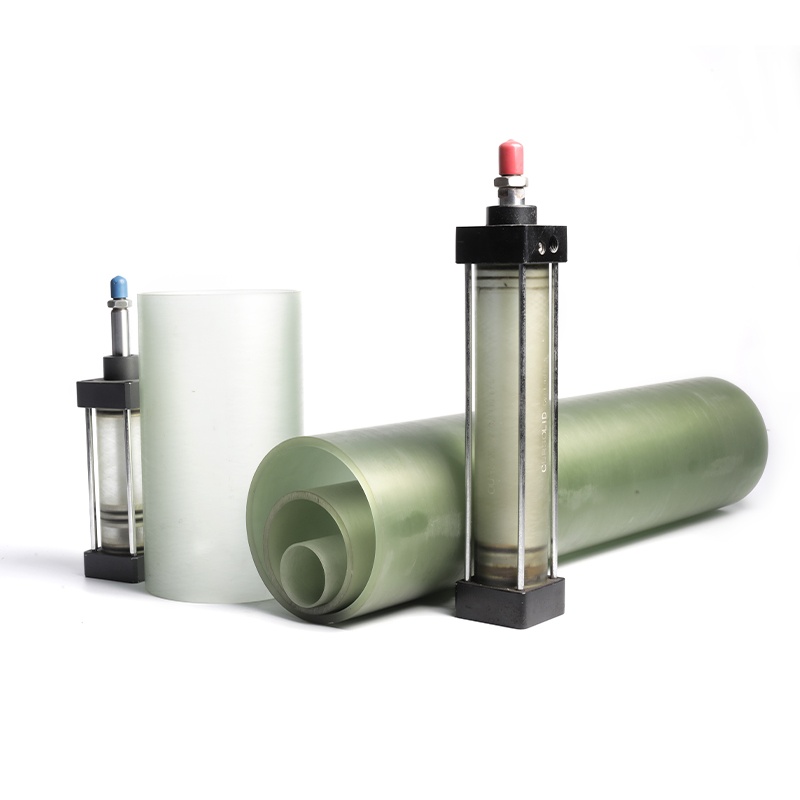Design considerations for selecting the right FRP tube
Introduction
Fiber-reinforced polymer (FRP) tubes are composite materials that consist of a polymer matrix reinforced with fibers, such as glass, carbon, or aramid. FRP tubes are lightweight, high-strength, and have excellent fatigue resistance, making them ideal for use in a variety of applications, including construction, transportation, and sports equipment. However, selecting the right FRP tube is critical to ensure optimal performance and meet project requirements.

Key Design Considerations
There are several key design considerations that must be taken into account when selecting the right FRP tube:
A. Load Capacity Requirements
One of the most important considerations is load capacity requirements. The load that an FRP tube can carry depends on the strength and stiffness of the fibers, as well as the thickness and geometry of the tube. Therefore, understanding the expected loads and stresses on the tube is critical to selecting the right material and design.
B. Stiffness and Strength Characteristics
The stiffness and strength characteristics of the FRP tube are also important factors to consider. The stiffness of the tube determines how much it will deflect under load, while the strength determines how much load it can withstand before failure. The choice of fiber type, resin, and manufacturing process can all affect these properties.
C. Environmental Factors
Environmental factors such as temperature, humidity, and exposure to chemicals can also affect the performance of FRP tubes. For example, high temperatures can cause degradation of the resin matrix, while exposure to chemicals can cause corrosion of the fibers. It is important to understand the environmental conditions in which the tube will be used to select the appropriate material and design.
D. Corrosion Resistance
FRP tubes are often chosen for their corrosion resistance properties compared to traditional metal tubes. Hence, selecting a tube with suitable corrosion resistance for the application environment is crucial.
E. Fire Resistance
Fire resistance is another important consideration, particularly in applications where the tube will be exposed to high temperatures. It is important to choose a tube that meets fire safety standards for the intended application.
F. Electrical Conductivity
Electrical conductivity is an important consideration for certain applications, such as those in the aerospace and defense industries where electrical grounding is required. In these cases, it is important to select a tube with appropriate electrical properties.
Material Selection
The choice of fiber type, resin, and manufacturing process can all affect the performance and properties of FRP tubes.
A. Types of Fibers
The most commonly used fibers in FRP tubes are glass, carbon, and aramid. Glass fibers are low cost and provide good stiffness and strength, while carbon fibers offer high strength and stiffness but are more expensive. Aramid fibers provide a balance between cost, stiffness, and strength.
B. Resins
The most commonly used resins in FRP tubes are polyester, vinyl ester, and epoxy. Polyester is the cheapest option but has lower mechanical properties than the other two resins. Vinyl ester provides better corrosion resistance and fatigue performance than polyester, while epoxy offers the highest mechanical properties and chemical resistance.
C. Composite Manufacturing Process
The manufacturing process also plays a critical role in determining the properties of FRP tubes. The three most commonly used manufacturing processes are pultrusion, filament winding, and hand layup. Pultrusion is the most common method for producing cylindrical tubes, while filament winding is used for complex shapes. Hand layup is a labor-intensive process that is often used for prototyping.
Testing and Quality Control
It is essential to ensure that FRP tubes meet industry standards and testing procedures, as well as quality control measures during manufacturing. Certification requirements may also be necessary to ensure conformance to regulations.
Application Examples
FRP tubes have been used in a variety of applications, including:
A. Infrastructure Projects
FRP tubes are commonly used in infrastructure projects such as bridges and buildings for their high strength, low weight, and corrosion resistance. Examples include the Pulaski Skyway in New Jersey and the Four Freedoms Bridge in New York.
B. Industrial Applications
FRP tubes are also used in industrial applications such as pipelines and cooling towers, where they provide excellent corrosion resistance and durability.
C. Sporting Goods
In sporting goods, FRP tubes are used to make high-performance products such as fishing rods and golf club shafts due to their high strength and stiffness properties.

Conclusion
Selecting the right FRP tube is critical to ensure optimal performance and meet project requirements. Key design considerations include load capacity requirements, stiffness and strength characteristics, environmental factors, corrosion resistance, fire resistance, and electrical conductivity. The choice of fiber type, resin, and manufacturing process can all affect the properties of the tube. Testing and quality control measures are essential to ensure conformance to industry standards and regulations. FRP tubes have been used in a variety of applications, including infrastructure projects, industrial applications, and sporting goods, and future trends

